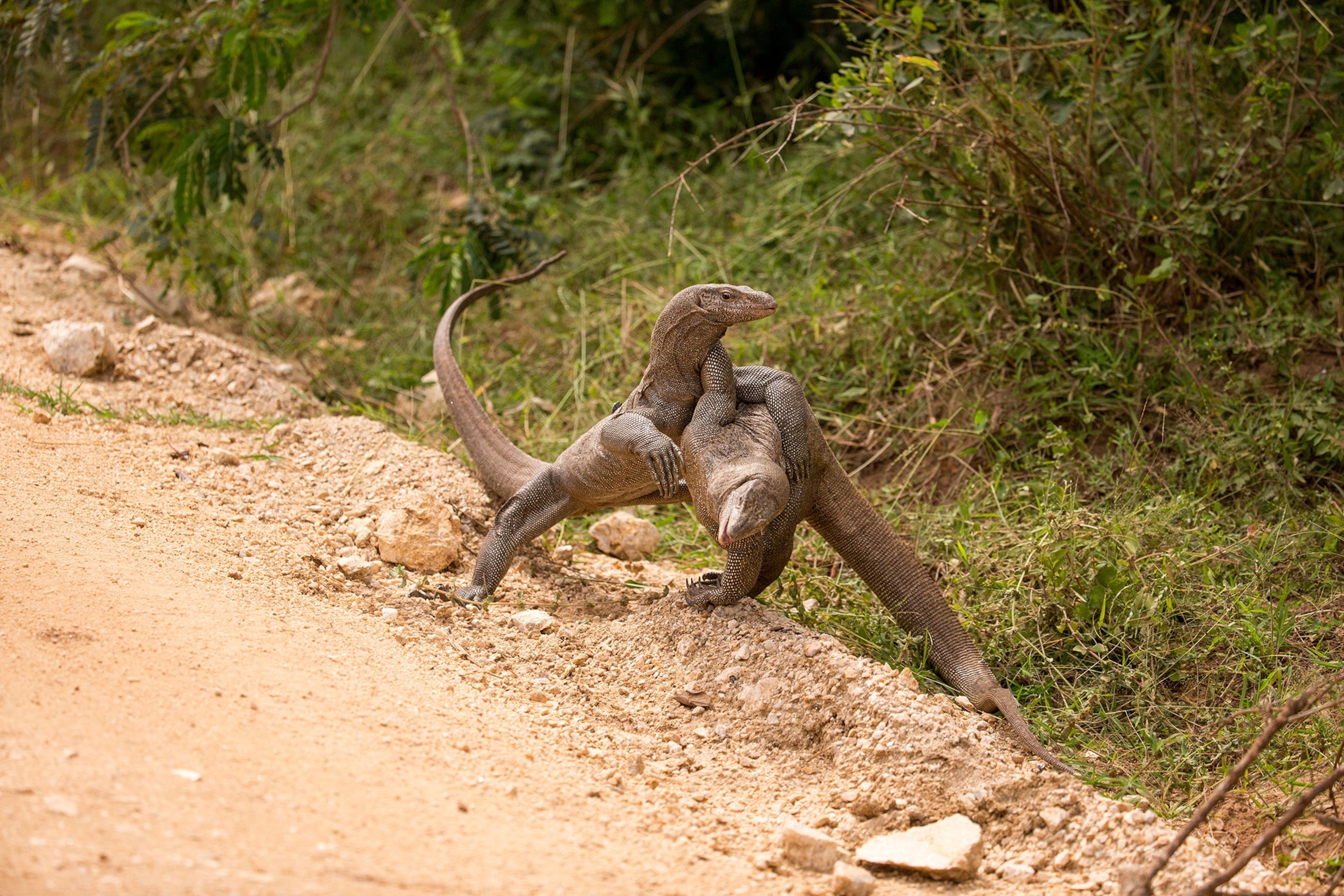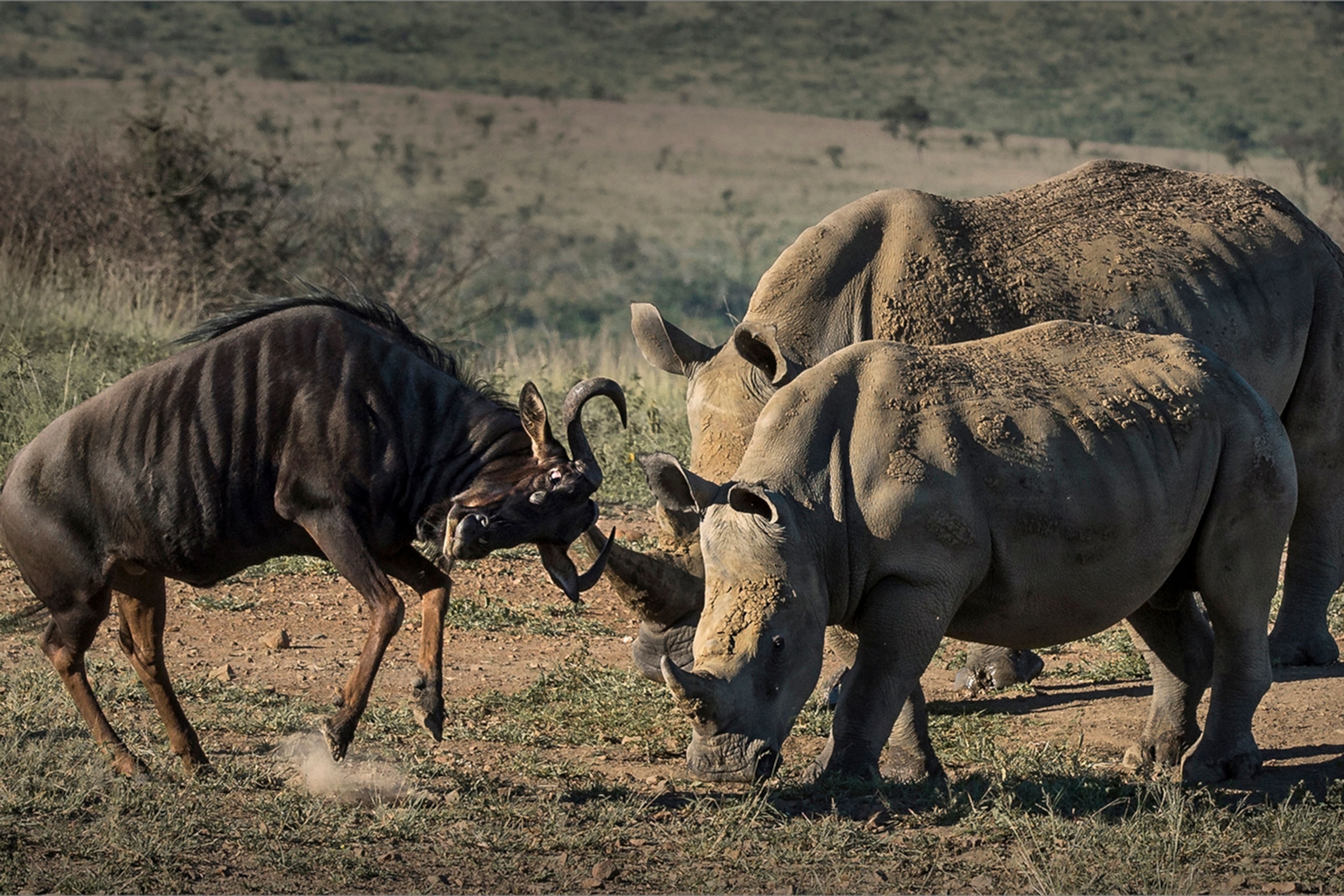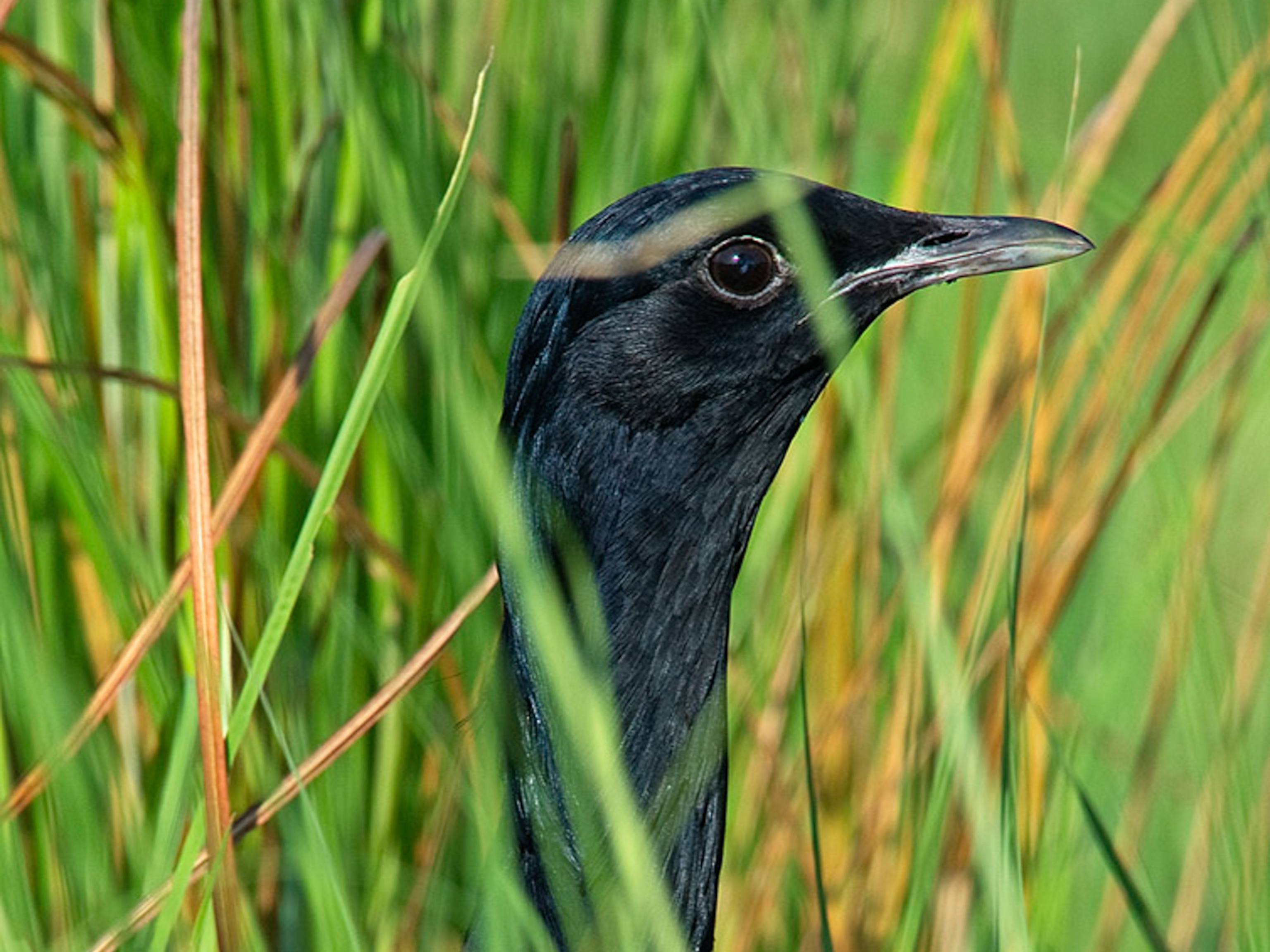Watch This Giant Land Crab Attack an Unsuspecting Bird
These massive crustaceans are making birds second-guess where they nest.
Coconut crabs are an anomaly compared to other crustaceans. They can weigh up to nine pounds, measure three feet across, and climb trees, hunting for coconuts to methodically husk and eat.
These brightly colored, anti-social crabs look like something extraterrestrial, but they're very much of this Earth. In fact, they live in underground lairs and have carved out an ecological space for themselves on several islands in the Indian Ocean.
Little is known about these creatures, so Mark Laidre, a professor at Dartmouth College and National Geographic explorer, embarked on a two-month expedition to the remote Chagos Archipelago to study them. It was during this time he witnessed them hunt.
In early March 2016, Laidre watched as a coconut crab snatched an adult red-footed booby sleeping on a low-lying tree branch, tearing it from the branch and snapping its wing. Paralyzed, the booby struggled as the crab held on with its powerful claws and kicked with its legs.
Within 20 minutes, five other coconut crabs swarmed to the spot, their keen olfactory senses drawing them to the smell of blood. The initial attacker dragged the still-breathing booby away, and the crustaceans fought. Over several hours, the crabs shredded the bird, carrying it away and consuming it in pieces.
Laidre says the scene was "pretty gruesome."
It turns out that these crabs, which are opportunistic omnivores, may be influencing where ground-nesting birds make their homes, according to Laidre's research, which was published Wednesday in Frontiers in Ecology and the Environment.
Birds can fly from one island to the next, but coconut crabs are stuck on the island on which they're born—they can't breathe underwater, so they can't swim to another island. Laidre observed that on islands where he found dozens of coconut crabs, there were no ground-nesting birds. And on islands where he found noddies nesting, he didn't observe any crabs. It seems that noddies, which are small birds with fragile eggs, had chosen to nest on an island where the crabs would not pose a threat to them.
The status of coconut crabs' population is not known—the IUCN Red List of Threatened Species records the crabs as "data deficient." But it's suspected that predation by humans and habitat destruction may be reducing their numbers.
Laidre says coconut crabs might be scary to other animals, but these invertebrates aren't to be feared by humans. (Except for maybe Amelia Earhart: some speculate that she might have met her demise being devoured by coconut crabs.)
"They're not belligerent. They're curious," he adds. "They're not coming and jumping and trying to attack you. Coconut crabs more should fear humans."
Laidre says the next step in studying these crabs would be to install camera traps near their habitats so scientists can observe them. No one has formally studied the animals' burrows—where they most likely mate—or looked at how they communicate.
"There's a lot more information that we need to gather," Laidre says, but the crabs are "darn cool."







































